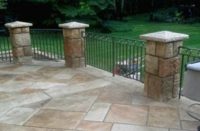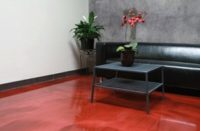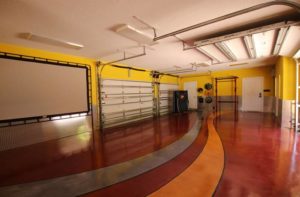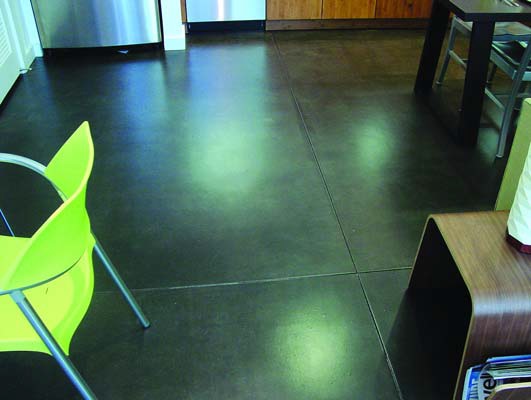
Dave Pettigrew gets a kick out of doing innovative things with decorative concrete. On his current project, he’s using a double dose of creativity.
West End Commons is a new 91-unit loft development in Oakland, Calif. The two- and three-story townhouses have office space on the ground floor, with living space in the upper levels. Pettigrew’s company, Diamond D Concrete, won the subcontract to clean and clear-coat 40,000 square feet of concrete slab floors.
When he got to the site, Pettigrew found the concrete was noticeably stained from rain and construction activity. Unable to remove all the stains, and unhappy with the dirty-brown color of the concrete, he came up with a better idea. He convinced the contractor to use a polyurea floor system that would be more attractive as well as more durable. With the help of Jose Ibarra of Crown West Inc., he found a way to disguise the stains and improve the floor’s color by adding pigment to the polyurea coating. “This polyurea with the charcoal tint in it took away 90 percent of that stuff,” he says. “You can look down in there and see the characteristics of the concrete, but it doesn’t pop out at you so vividly.”
Pettigrew and Ibarra used trial and error on a series of samples to arrive at the best pigment concentration. The tint is added to the polyurea’s Part A component before it is mixed with the Part B component. After thorough blending, the material is broadcast over the floor, squeegeed, and backrolled.
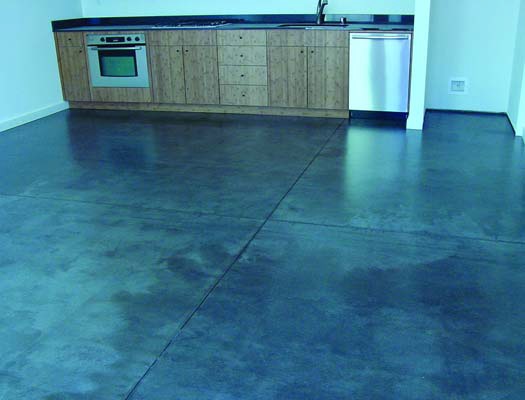
The other innovation on this project had to do with the surface finish. “I made the contractor a mock-up of the polyurea finish, and it was too shiny,” Pettigrew says. “So then I went back and sanded the top of the polyurea and put a satin epoxy coating on top. It turned out just beautiful.”
In all, Pettigrew is using a three-coat flooring system on the project. After mechanically cleaning the bare concrete, he applies an epoxy clear coat as a bonding layer and covers it with the tinted polyurea. Then, he sands and vacuums the surface before applying the satin epoxy topcoat. “You can use a light satin wax on it, and it’s good to go for years to come,” he says.
You can hear the pride in his voice as he describes the results. “This floor system is 16 mils to 20 mils thick, so it’s good for ten years with minimal upkeep and maintenance.” Then he says excitedly, “The floors are gorgeous. They look like you can reach down in them, but they don’t have that real high sheen like the polyurea does.” Finally he adds, “The cost is barely more than just putting the sealer down.”
Polyurea Coating Manufacturers
Crown Polymers
(888) 732-1270
Willamette Valley Company
(541) 484-9621
Versatile Building Products
(800) 535-3325
